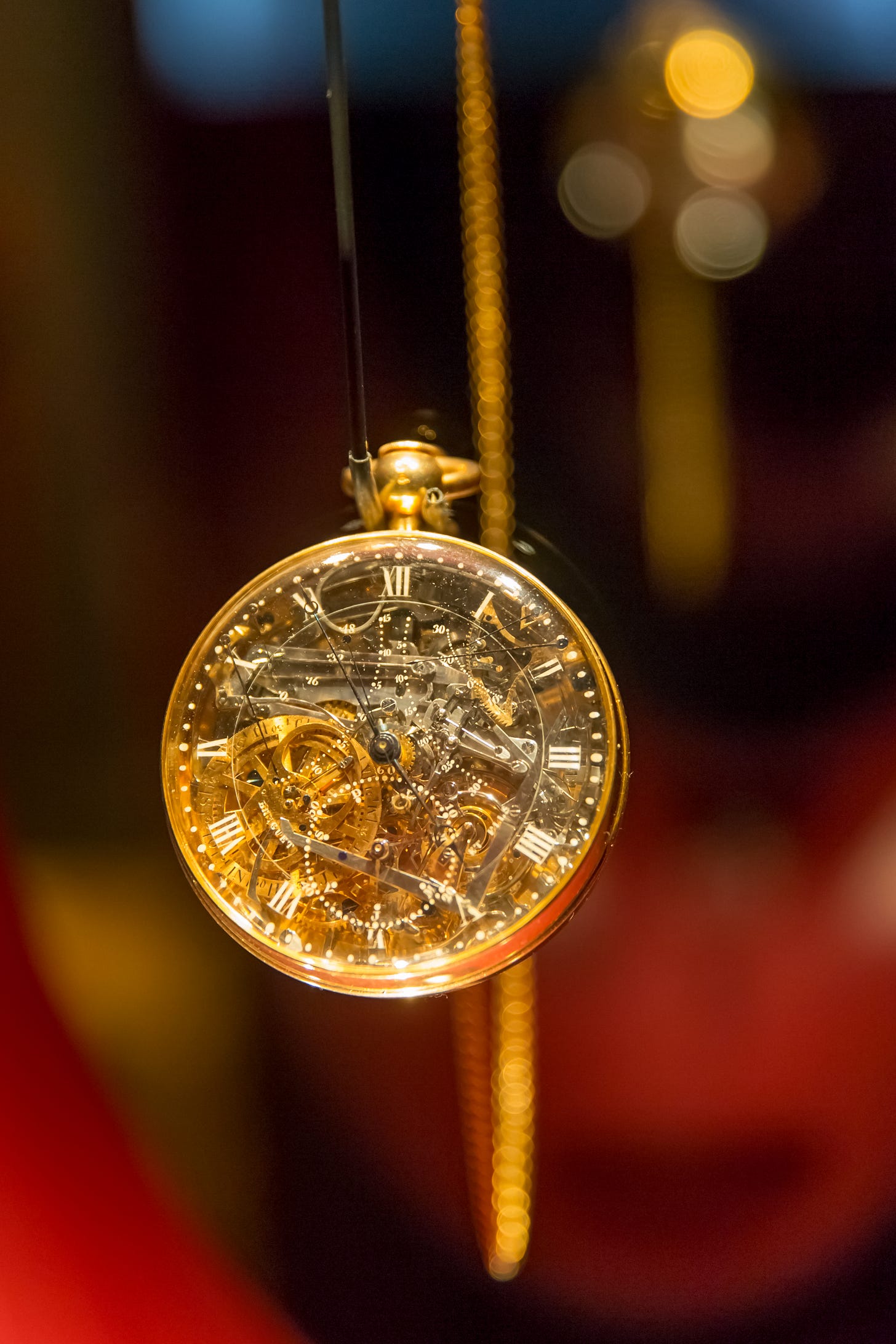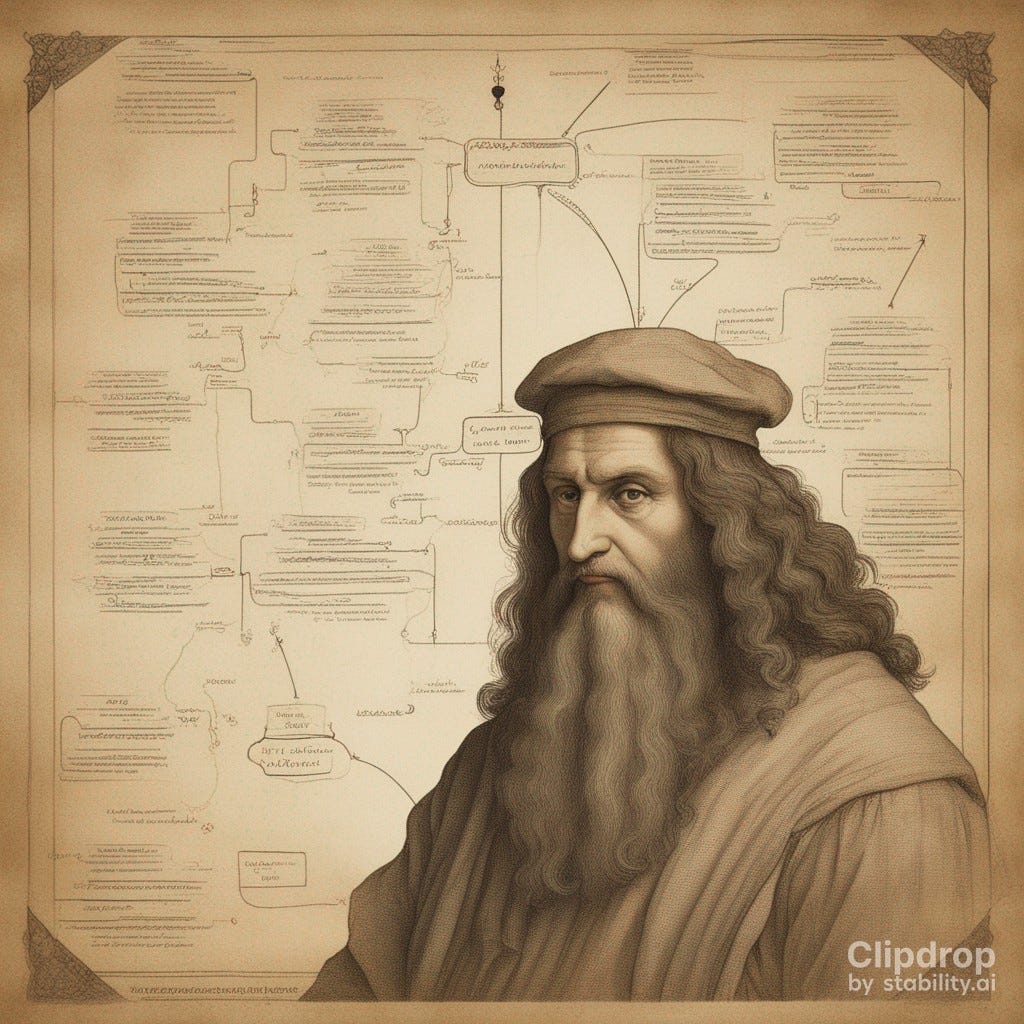Engineering Mindset vs. Artist Mindset
A watchmaking marvel that wasn't finished on time, an unfocused genius, and a reflection on the futile chase of perfection in building products.
Did you know that, in watchmaking lingo, features are called “complications”? Isn’t that fitting? The whole concept of features as complications is what inspired me to write this piece. Join me on this trip through history, artistic engineering, and agility (or lack thereof).
Most nights, I fall asleep listening to something. Usually, it’s an audiobook, a podcast, or a radio show, ideally something that is broken up into chapters so I can pick it up at the point where I fell asleep, the following night.
The fascinating history of a watch
A few nights ago, I was listening to a curious story about a wonderful work of art, the “Grande Complication - Marie-Antoinette” pocket watch No. 160, commissioned by a mysterious admirer of French Queen Marie-Antoinette in 1783 from Abraham-Louis Breguet, a famous Swiss watchmaker living in Paris towards the end of the 18th century. He was an innovator, who besides designing some of the finest works of horology art for the European nobility, also invented the first precursor to the wristwatch (in 1810, for Caroline Bonaparte, Queen of Naples and Napoleon’s younger sister).
An aside: House Breguet still exists and has been producing quality clocks and watches since 1775. It’s the kind of brand that doesn’t bother to publish prices online and has exclusive points of sale that require you to schedule an appointment. The simplest, cheapest watch models retail for some $5,000 or more, but most of them are in the 5 figures range, with some of the most exclusive models being over $200,000.
Now, back to our story: as I was saying, an admirer of Queen Marie-Antoinette commissioned the watch from Breguet. Some authors speculate it was Hans Axel von Fersen, a Swedish Count who also happened to play a role in the American Revolutionary War, fighting alongside General Rochambeau as part of the French troops sent in 1780 to support the revolution.
This mysterious character commissioned Breguet in 1783 to build an 823-component watch with every function known at the time. Considering the recipient of the gift, no expense was to be spared, and the factory costs were 6x the cost of the other major work by Breguet, estimated at around 30,000 francs. (The watch was most recently appraised in 2013 at $30 million.)
Now, the main complication (pun intended) was the time it took to build: the watch was commissioned in 1783, and by July 14th, 1789 -the day of the storming of the Bastille prison- the watch was not ready. The Queen was quite literally running out of time! All pleas to speed up the development were useless, art cannot be rushed. Ultimately, Queen Marie-Antoinette fell under the guillotine in 1793, and Count von Fersen was killed in Stockholm by an angry mob in 1810, accused of being involved in the sudden death of King Charles August. Abraham-Louis Breguet himself had to flee for England in 1793, returned to Paris in 1795 when the political scene had calmed down, and died in 1823, at the age of 76.
And still, the watch was unfinished. It wasn’t until 1827 that it was completed by Breguet’s son, Antoine-Louis. After 44 years, the project was finally complete.
It is a fascinating story, full of political conspiracy, romance, conflict, and not a small amount of bloodshed, totally worthy of a period movie (Gerard Depardieu would probably play Breguet, he’s in EVERY French movie).
Looping back to Product Management
Now, what’s the connection between this story and Software Development, Product Management, and Agility, you may ask…? Have I just been wasting your valuable time with pointless stories about politicians and horologists? Maybe. 😝
But think of it this way: What was the main goal of the “Grande Complication - Marie-Antoinette” pocket watch No. 160 product? The goal was to impress the French Queen, a rather expensive and extravagant proof of love.
Forget for a minute the watch itself and its $30 million appraisal (the historical figures attached to its history, and its disappearance from the L.A. Mayer Museum of Islamic Art in a robbery in 1983 and subsequent recovery in 2006 probably added to its price tag).
Did the product fulfill its purpose? Did it create the value it was supposed to…?
It would be hard to argue it did, considering it wasn’t finished until 34 years after the death of the intended recipient.
In software development, there is always a tension between the mindset of an artist and the mindset of an engineer. The artist focuses on creating a perfect, polished product, while the engineer focuses on creating a useful, valuable product that meets the needs of its users.
This is particularly true in the case of software, where each MVP release is an ongoing process of testing hypotheses and learning from the results. Delaying the release is not just delaying the product: it is also delaying the learning.
And that delay in learning can be deadly. Not losing-your-head-by-means-of-a-sharp- guillotine-blade-kind of deadly, but still…
The Engineer vs. the Artist in you
Arguably, all good Software Engineers have an Artistic component to them. There’s that inspired vision and that commitment to the craft that is necessary to create a great product. But at the same time, they employ quite different archetypes:
An Artist chases after a vision and will pursue it until it gets finalized, polished, and complete. The Engineer, instead, does not get that benefit -or carry that weight. The Engineer needs to embrace the neverending nature of its trade: a product is never really done, and the minute it does, it is dead. So clasping that ideal of a (someday to be) finished product distracts them from the value of hurling that hypothesis that any product release is into the world, and learning from it.
The ultimate Engineer/Artist
There’s a reason why Leonardo da Vinci is frequently referred to when it comes to innovation. He was both an outstanding artist and an engineer way ahead of his time. That tension between his art and his engineering mindset (and a component of ADHD, if we’re to trust some posthumous research) is probably at the core of his famed procrastination.
For someone as famous as him, he left behind significantly few works of art. Less than 20 surviving pieces can be attributed to him, and several of them are unfinished. Some were even destroyed or severely damaged by his utilization of untested techniques.
Some, like his “Gran Cavallo” commissioned by Milan’s Duke Ludovico Sforza, were never even started. It’s true that during the 17 years he was working in Milan under Sforza’s patronage, Leonardo was also creating a city plan, new weapons designs, innovative defense systems, a prototype for a submarine, as well as stage sets, rhymes and puzzles for the court, etc.
And you complain about your stakeholders and your backlog!
Even his most famous piece, the Mona Lisa, took him about 13 years to complete. Mostly complete, I should say, because in his old age Leonardo lost the use of his hand and was unable to finish his vision for it.
The unfocused Engineer
Leonardo Da Vinci also exemplifies an antipattern of software development and agility: lack of focus can lead to many unfinished experiments, resulting in perennially incomplete deliverables, and missed learning opportunities.
Most of the time he could pull it off and his genius earned him the tolerance of his patrons, even with a dose of cheekiness:
“Leonardo used his wit to mask his shortcomings and talk his way out of the trouble or embarrassment caused by his behaviour. While working on the Last Supper, for example, he was subjected to the continuous nagging from the superintending prior of Santa Maria delle Grazie who ultimately asked the Duke of Milan for intervention. Summoned by the Duke, Leonardo quickly justified his delay with the difficulty of finding the models of the last two characters, Jesus and Judas. For Judas, he explained, he had searched in vain through the jails of Milan for the perfect looking scoundrel. None could be found and he conceded that in the end, if he could not find a better model for the cruel apostle who betrayed our Lord, he would have to use the face of the importunate and tactless prior. The Duke laughed the whole matter off and Leonardo returned working at his own leisure.”
Grey Matter Leonardo da Vinci: a genius driven to distraction, Marco Catani & Paolo Mazzarello, Published in the Oxfor Brain Journal
But, again, he was a genius. Are you confident enough to pull this off?
Can you switch back and forth between your Engineering and your Artistic mindset? How do you do it? Please let me know in the comments!






